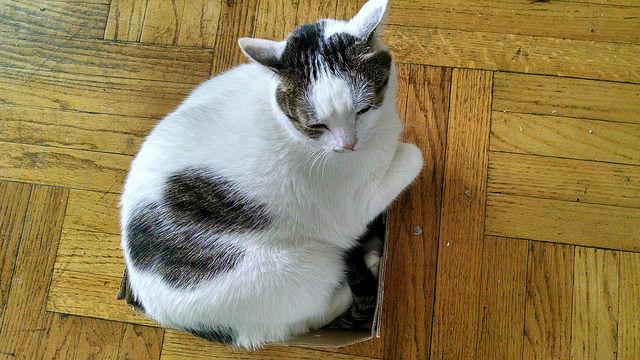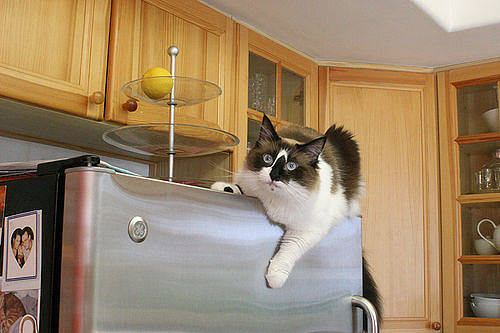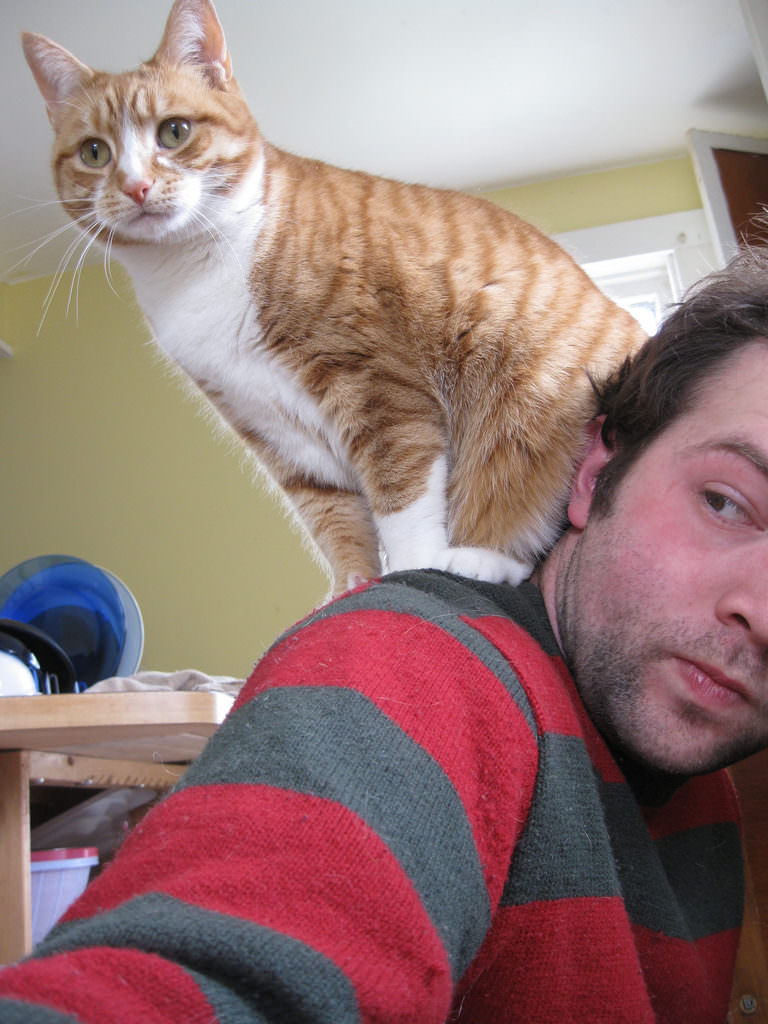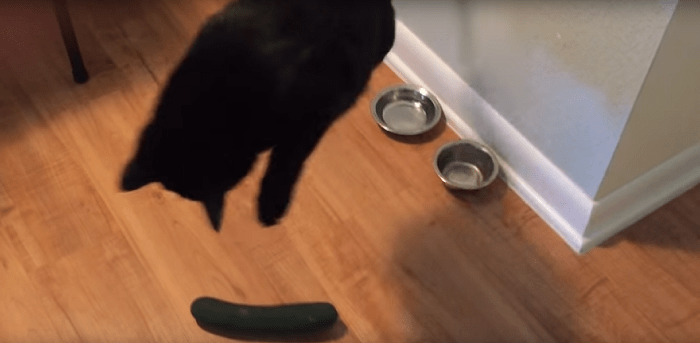Cats do some pretty weird things. And usually we just shrug it off as “she’s a cat.” But do you ever catch yourself staying awake at night wondering why your cat is crammed inside your dustpan instead of sprawled out on the bed? If the late night pondering is keeping you awake, then hopefully this article will let you get some sleep! Dr. Frank McMillan has been the Director of Well-Being Studies at Best Friends Animal Society since 2007. Before that, he was in private practice in Los Angeles for 23 years and was a clinical professor of medicine at the Western University of Health Sciences College of Veterinary Medicine. We asked Dr. McMillan to explain three crazy cat behaviors. Below are his answers. Does your cat do these behaviors? Share in the comments!
Why do some cats cram themselves in small spaces to sleep?
Cats are known for the desire and ability to squeeze into very small spaces to sleep. Shoe boxes, laundry baskets, open drawers, paper grocery bags, and even the bathroom sink all seem to be attractive spots for cats to compress themselves into. Why is that?
There are a couple of possible reasons. The most likely is the sense of safety and security that small spaces provide. Being surrounded by opaque barriers, the cat instinctively senses that she can’t be seen or reached by other animals who may pose a risk of harm.  It’s easy to forget that while cats are well-known predators, in nature they are also prey animals – to coyotes, wolves, hawks, and eagles. The fact that the cat may live in a house with no risk of being eaten by a predator does not extinguish instincts that have existed for hundreds of thousands of years of feline evolutionary history. Another potential reason for seeking tiny spaces for sleeping is to preserve body heat. Curling up into a tight ball in an enclosed container allows the cat to stay warm, which becomes especially important in colder times of year. This is why you will often see cats sleeping in an open, sprawled out position on cooler surfaces during the warmer summer months – when they have little need to retain heat.
It’s easy to forget that while cats are well-known predators, in nature they are also prey animals – to coyotes, wolves, hawks, and eagles. The fact that the cat may live in a house with no risk of being eaten by a predator does not extinguish instincts that have existed for hundreds of thousands of years of feline evolutionary history. Another potential reason for seeking tiny spaces for sleeping is to preserve body heat. Curling up into a tight ball in an enclosed container allows the cat to stay warm, which becomes especially important in colder times of year. This is why you will often see cats sleeping in an open, sprawled out position on cooler surfaces during the warmer summer months – when they have little need to retain heat.

Why do some they insist on being in high places?
Cats are very fond of spending time on high surfaces, such as high shelves, the top of the refrigerator, and the upper perches of cat trees and kitty condos.

Our best explanation for this behavior traces the history of the ancestors of today’s modern cat back thousands of years. In the wild setting, seeking higher places to rest and hang out would give cats the advantage of spotting prey animals from above, which would give the cats the advantage of pouncing from up high and thereby giving much less warning to the bird of rodent on the ground below. Also, because cats were hunted by other carnivores like wolves and birds of prey, staying up in tree branches would allow the cats to take advantage of the tree foliage for concealment. Altogether, being up high improved the cats’ chances for survival by both optimizing the chances for obtaining food and minimizing chances of becoming food.

Therefore, while instinct may explain the cat’s desire to seek high places, the simpler interpretation of the behavior in today’s cat is that being up high allows the cat the best view of everything going on in his living space. Along with this is how the elevated locations offer the cat a ‘safe haven’ where she can escape the aggravations of such things as the children and dogs in the house. Spending time in a place where potential nuisances can’t disturb them provides cats with a peace of mind that spaces on the floor cannot.
Why do some cats “freak out” about unusual things (like the cucumber or a new toy?)
When cats are surprised by the sudden sight of an unusual object very near them they can react with a dramatic fear response. They may fling themselves upward or backward with such force that they risk significant injury. This phenomenon has recently shown up in videos posted online of cats reacting to cucumbers or other vegetables placed next to them. When the cat turns and sees the object, the startle response is explosive.

The intense, automatic, and immediate nature of the response suggests a strong innate (instinctual) fear. This would mean that something during the cat’s evolutionary past that resembled this object or situation posed an urgent danger that required a rapid response. But what would that be? We don’t yet know. The most likely reason to evolve such a fear would be the sudden appearance of a predator. The cucumber may bear a resemblance to a snake (or a large snake head). But perhaps it is something else, such as a weasel.
While some folks find the cats’ reactions humorous (hence the popularity of the videos), they aren’t. Intentionally causing an intense fear reaction in a pet is, morally speaking, no different than causing such a response in a human infant.
